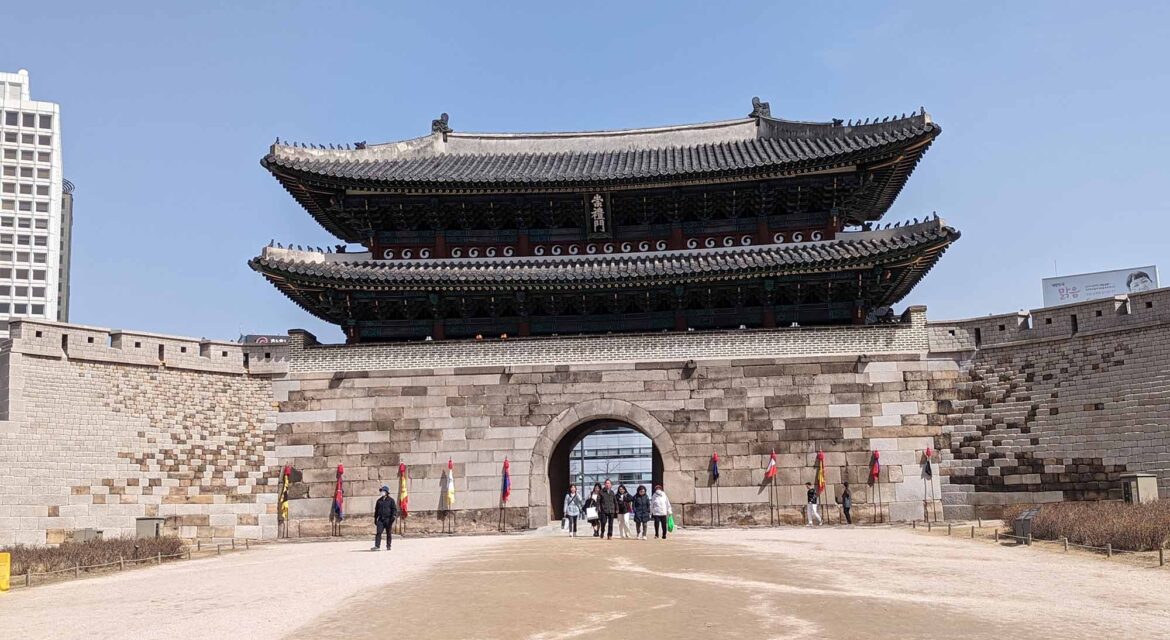 One of the original four main gates built around the city of Seoul in the 14th century, the Sungnyemun Gate has been identified as the number one national treasure of South Korea. This legacy is the result of an unrivaled history but also highlights what it can mean for a piece of infrastructure to become something much more to a city and an entire nation.
One of the original four main gates built around the city of Seoul in the 14th century, the Sungnyemun Gate has been identified as the number one national treasure of South Korea. This legacy is the result of an unrivaled history but also highlights what it can mean for a piece of infrastructure to become something much more to a city and an entire nation.

“The Gate of Exalted Ceremonies”
 Sungnyemun Gate was built during the reign of the founder of the Joseon Dynasty, which was the last dynastic kingdom of Korea that ruled the region for over 500 years. It was one of the four main gates that were constructed between 1396 and 1398 to allow access to the city of Seoul. The name of the main gate in the south literally means ‘the gate of exalted ceremonies.” It was and still is also known as Namdaemun Gate, which simply means, “south gate.” It is the oldest and largest of the remaining wall gates.
Sungnyemun Gate was built during the reign of the founder of the Joseon Dynasty, which was the last dynastic kingdom of Korea that ruled the region for over 500 years. It was one of the four main gates that were constructed between 1396 and 1398 to allow access to the city of Seoul. The name of the main gate in the south literally means ‘the gate of exalted ceremonies.” It was and still is also known as Namdaemun Gate, which simply means, “south gate.” It is the oldest and largest of the remaining wall gates.
The gate is defined by a 2-story wooden structure that stands on top of a stone base. It is a historic pagoda-style gateway and resides near the historic Namdaemun Market, providing another key connection to the culture of the city. It features a hip roof with a dapo design along with a dragon on the ceiling, further connecting it to the culture of the past and pesent.
Repaired and restored numerous times over the centuries, Sungnyemun Gate survived the demolition of the city walls as well as the installation of streetcar tracks through the gate in the 19th century. Access was restricted during the colonial rule of Japan and it was extensively damaged during the Korean War. A 2008 arson attack damaged much of the wooden structure, which was extensively restored thanks to restoration efforts that took over five years to complete to restore the gate as close as possible to its original form. All of this has enabled it to become a top attraction in Seoul, which is further illustrated by it being designated as the first National Treasure of South Korea.
Maps and guides to the city of Seoul all prominently feature Sungnyemun Gate, while various shops and stores utilize the unmistakable icon of the monument as part of their identity. Lit of in spectacular fashion at night, the landmark is very much part of the landscape of the modern city. In doing so, Sungnyemun Gate has become a landmark that attracts residents and visitors in a way that has created countless opportunities for engagement across the city and beyond.

A Legacy That Might Have Otherwise Been Lost
 With a history that spans multiple centuries, Sungnyemun Gate has a legacy that few can match. However, the efforts to embrace and celebrate this legacy have created an icon that might have otherwise been lost or destroyed. Doing so has opened up countless opportunities for engagement that allow audiences of the present to connect with the past in a way that resonates across the eras.
With a history that spans multiple centuries, Sungnyemun Gate has a legacy that few can match. However, the efforts to embrace and celebrate this legacy have created an icon that might have otherwise been lost or destroyed. Doing so has opened up countless opportunities for engagement that allow audiences of the present to connect with the past in a way that resonates across the eras.

